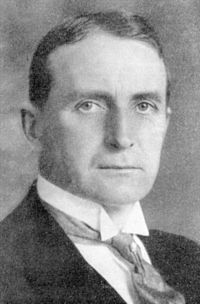Bjørn Helland-Hansen Scientist
Bjørn Helland-Hansen (16 October 1877 – 7 September 1957) was a Norwegian pioneer in the field of modern oceanography. He studied the variation patterns of the weather in the northern Atlantic Ocean and of the atmosphere. He developed the "Helland-Hansen Photometer" in 1910, which was carried on board Michael Sars. It was operated for the first time close to the Azores at a depth between 500 and m. In 1915 he became Professor of oceanography in the University of Bergen, and in 1917 director of the Geophysical Institute, University of Bergen.In 1933 he was awarded the Alexander Agassiz Medal. In 1939 he became President of the International Geodesic and Geophysical Union. He was a member of the Prussian Academy of Sciences and a member of the Member of the Academy of Sciences of the German Democratic Republic (DDR).Helland-Hansen trained Alexander Kuchin, the Russian oceanographer who went to Antarctica with Roald Amundsen. An island in the Russian Arctic, east of the Geiberg Islands, has been named Gellanda-Gansena after Helland-Hansen.
